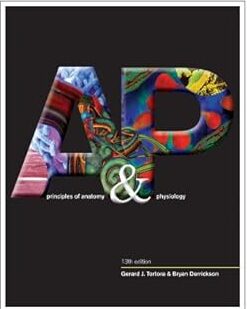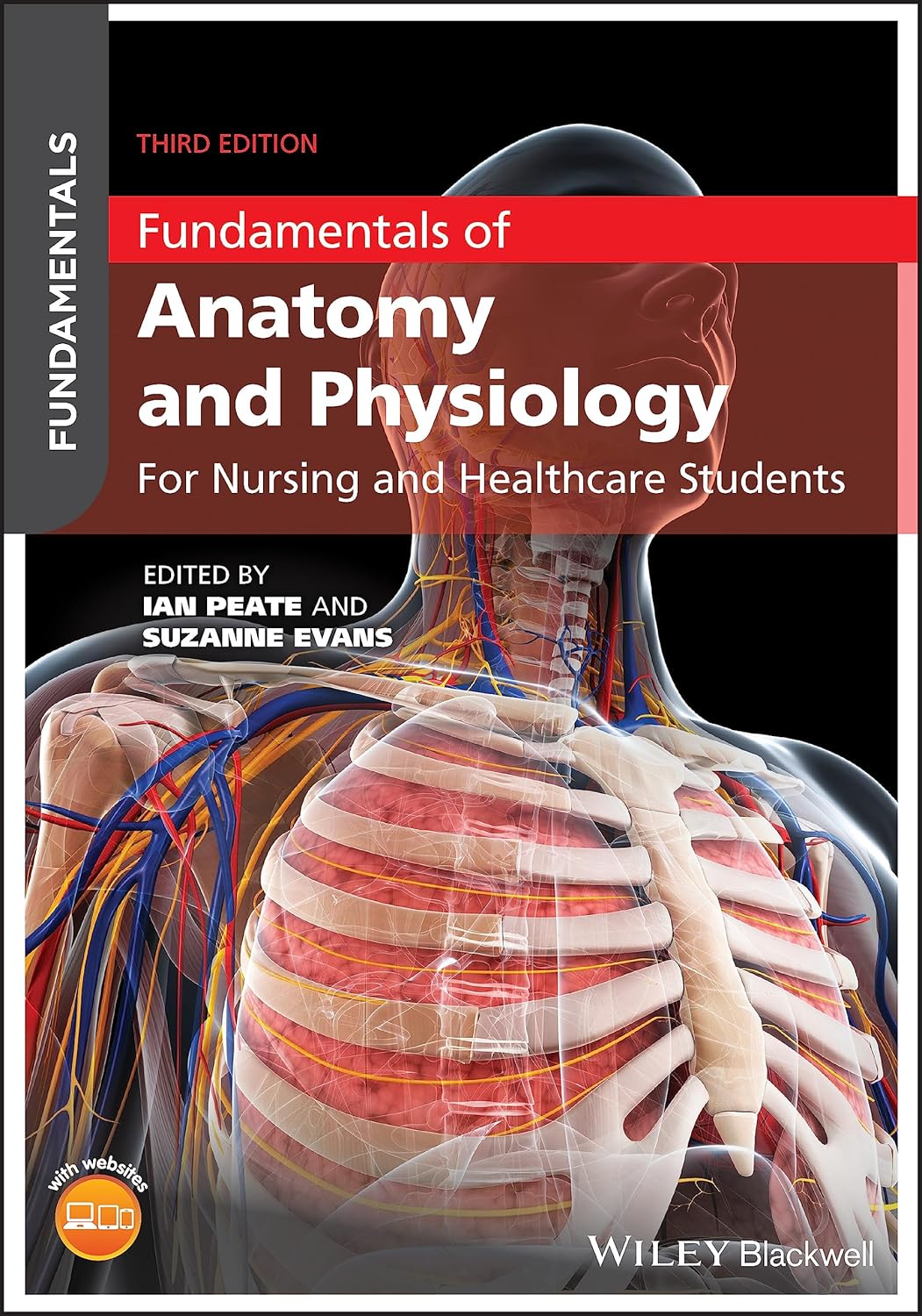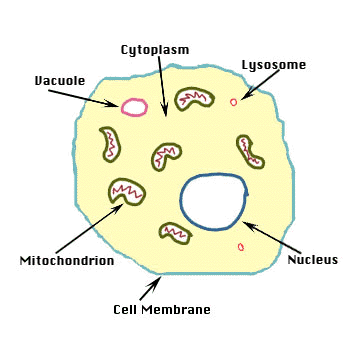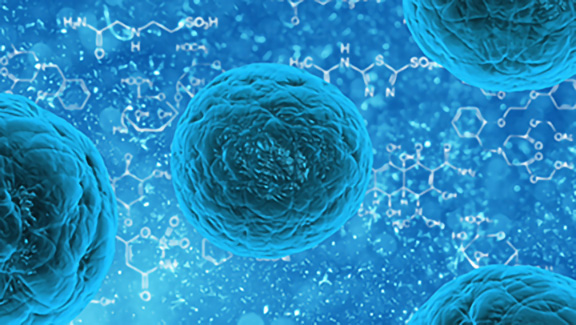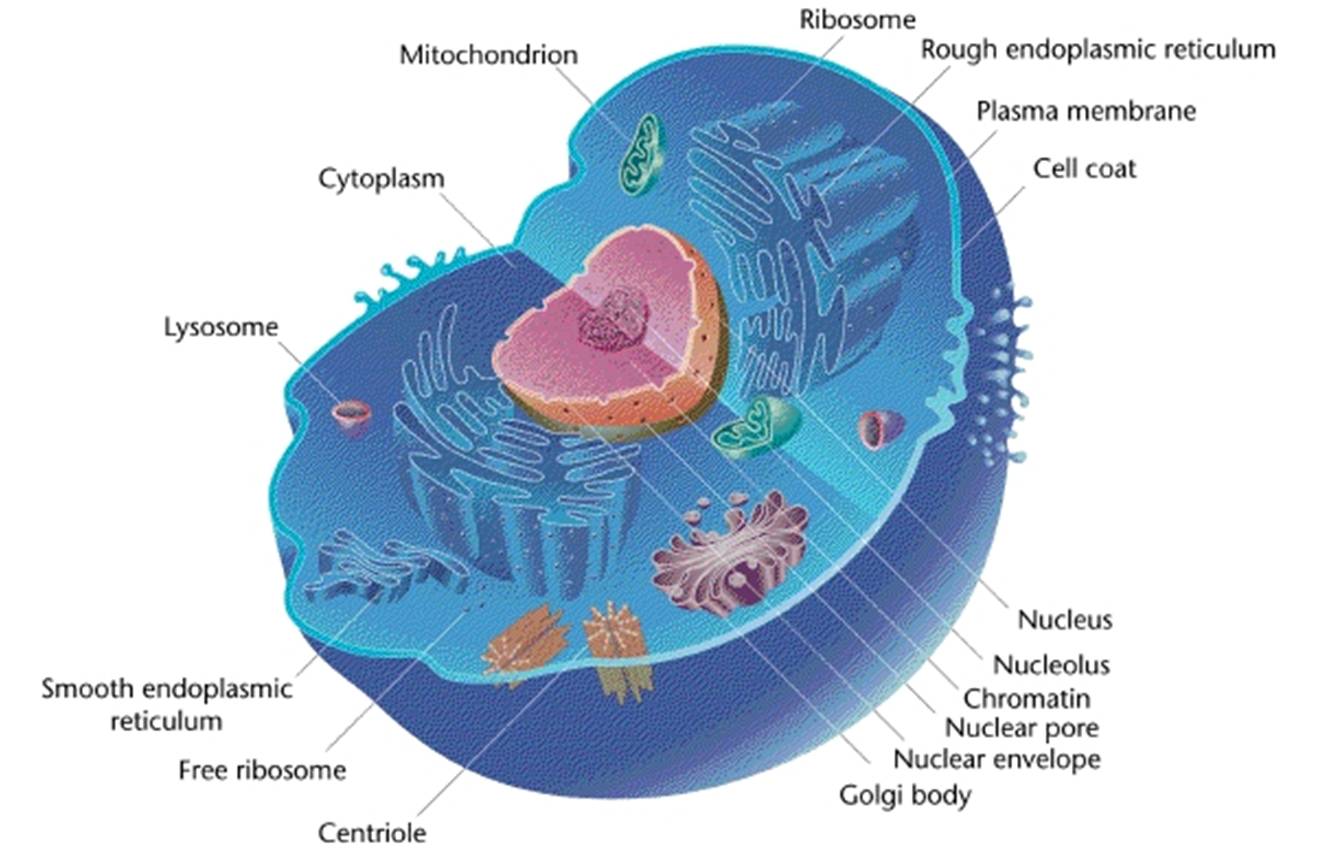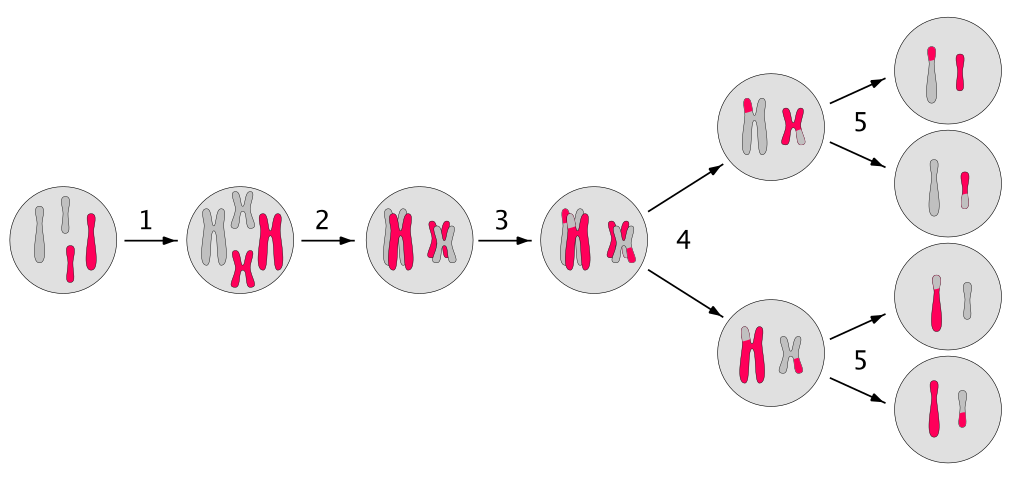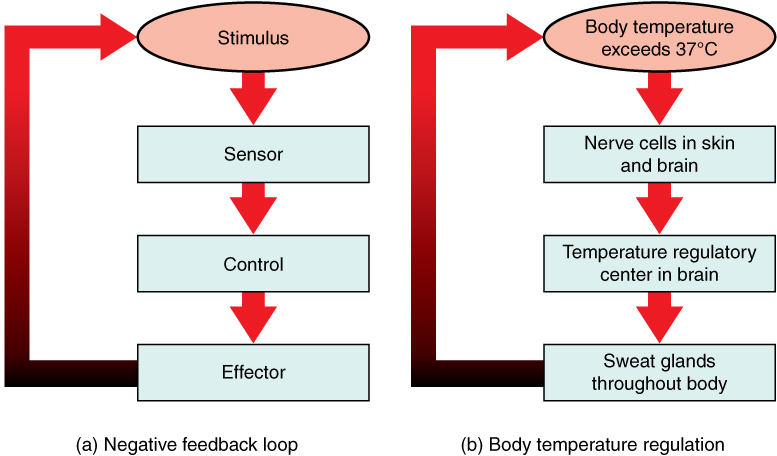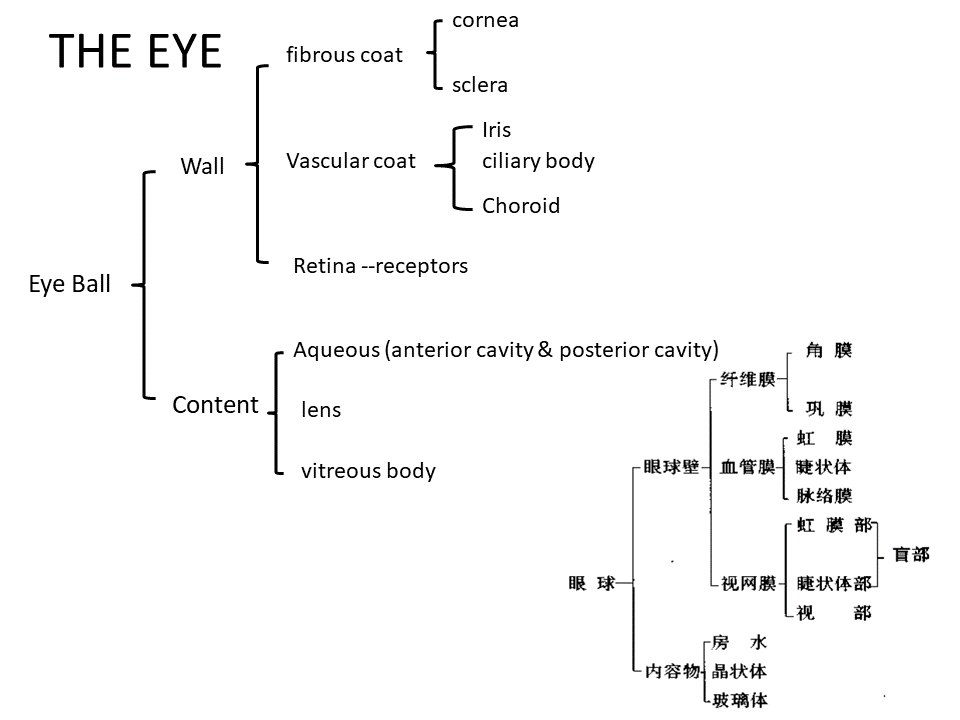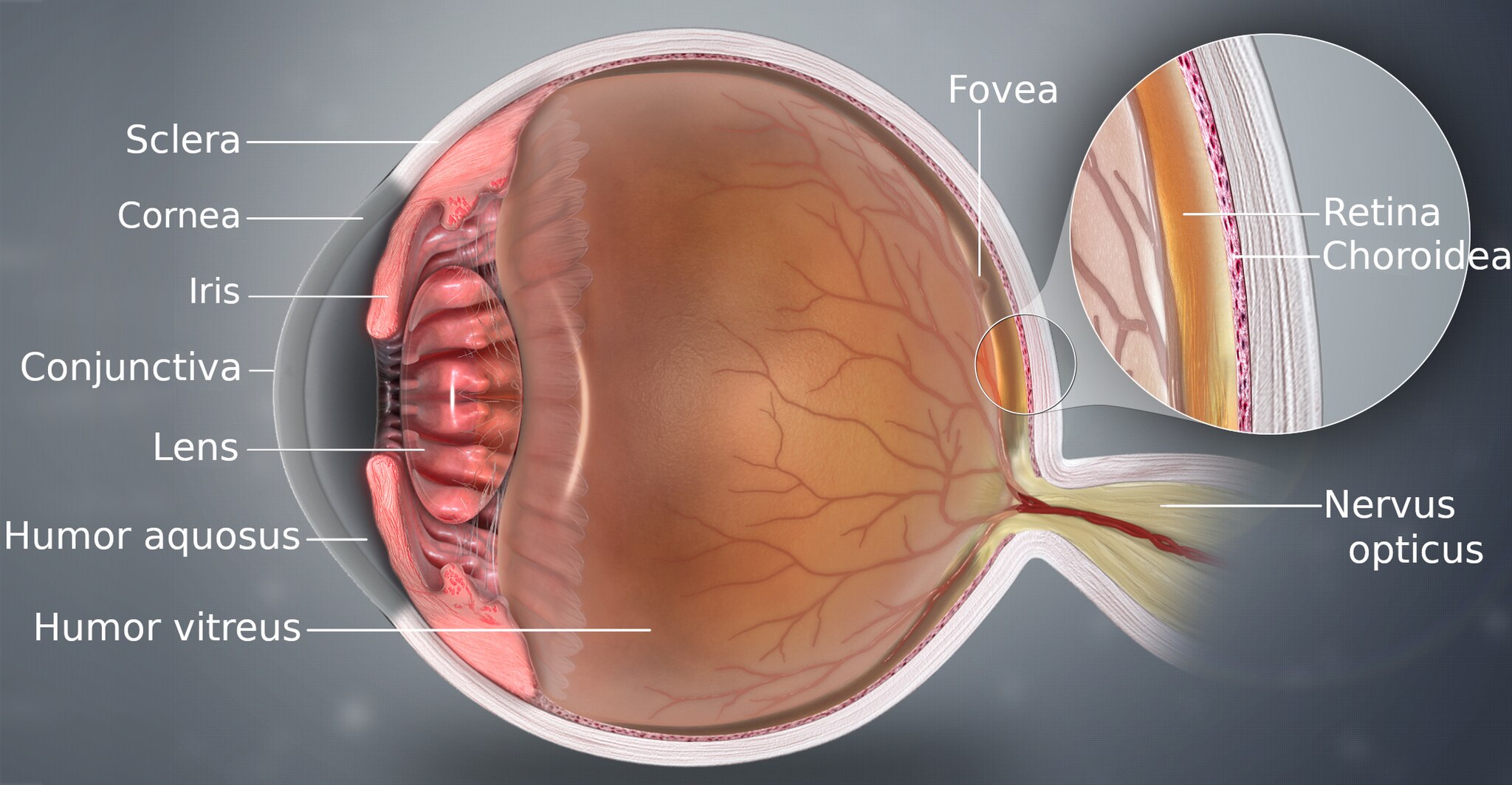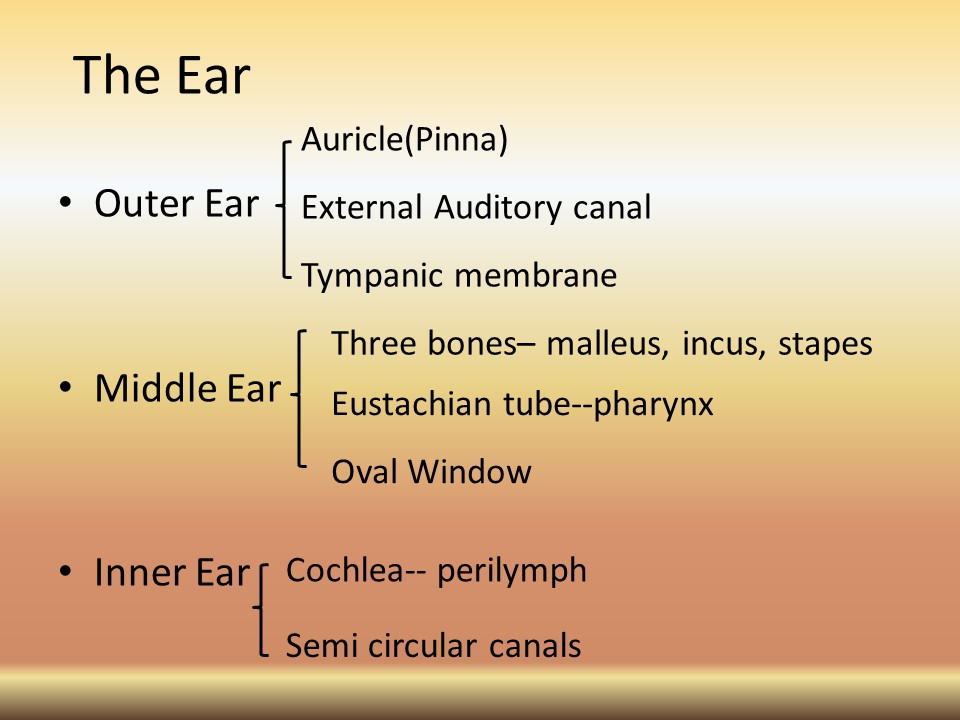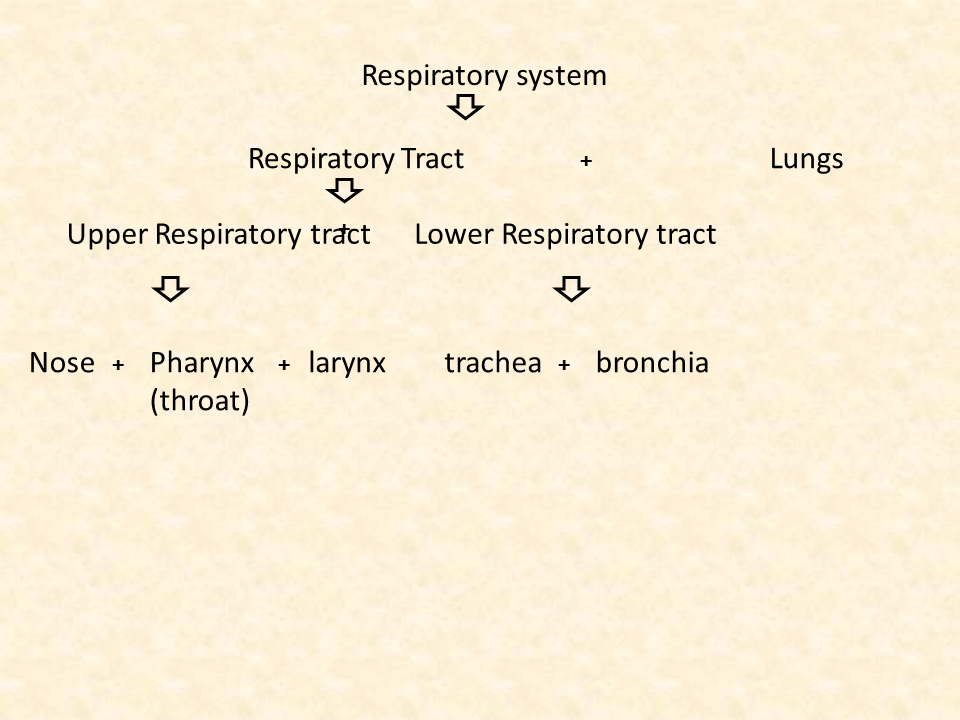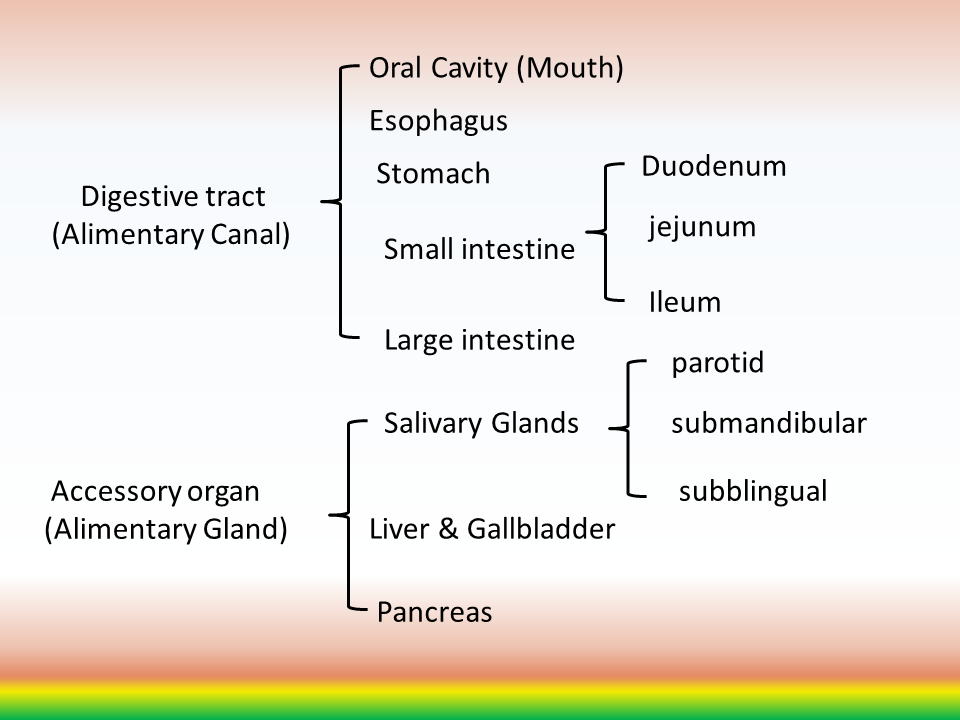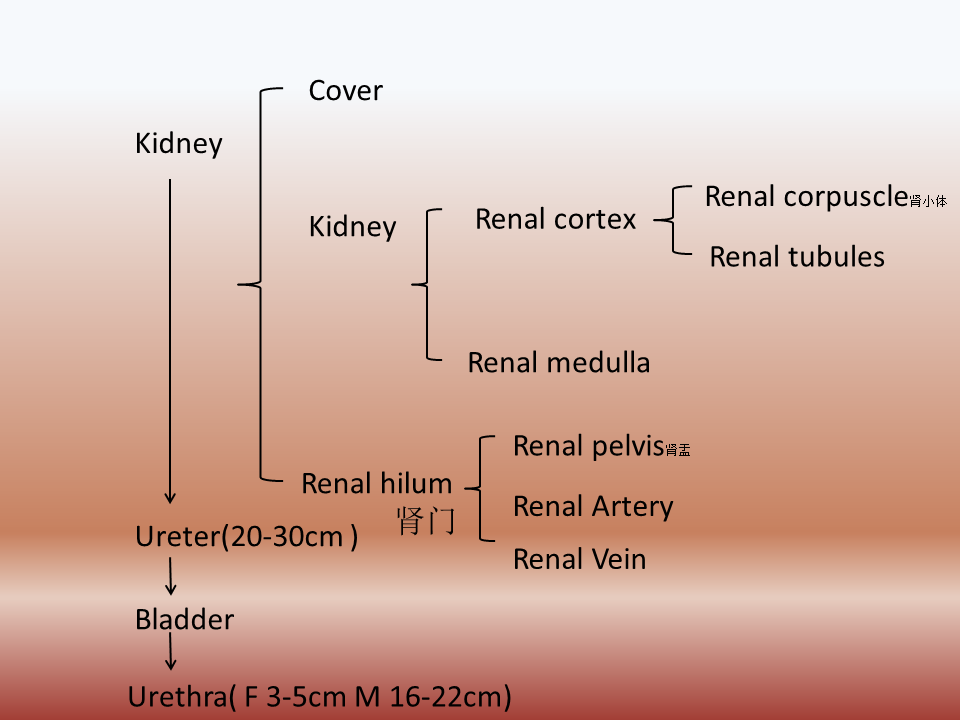Enter your text here...
Physiology (生理学)
Physiology is the branch of biology that deals with the study of the normal functions and mechanisms of living organisms and their parts. It encompasses a wide range of disciplines focusing on how living organisms, from single-celled organisms to complex multicellular organisms, function and maintain homeostasis.
-
Physiology
-
Introduce
-
Cell
-
Homeostasis
-
Tissues
-
Locomotion
-
Nerve
-
Senses
Jan. 7 – April 22, 2025, Tue, 12:30 to 3:30
| Class | Date | Topic |
1 | Jan. 7 | Physiology Introduce; Cells and Homeostasis |
2 | Jan. 14 | Tissues |
3 | Jan. 21 | The Locomotion System |
4 | Jan. 28 | Nerve system-1 |
5 | Feb.4 | Nerve system-2 |
6 | Feb.11 | Special Senses+ Course review |
7 | Feb.18 | Midterm Exam (40%) |
8 | Feb.25 | Endocrine System |
| Mar.4 | Reading Break |
9 | Mar. 11 | Cardiovascular System: Blood |
10 | Mar.18 | Cardiovascular System: Heart and Blood vessels |
11 | Mar.25 | Respiratory system |
12 | April. 1 | Digestive system-1 |
13 | April.8 | Digestive system-2 |
14 | April.15 | Urinary system & Course review |
15 | April.22 | Final exam (40%) |
Physiology: It is the study of how the body and its part work or function.Level of structural organization of the body•Cell: The smallest independent units of life.•Tissue: tissue is made up of many similar cells that perform a specific function.•Organ: - Is an integrated collection of two or more kinds of tissue that works together to perform specific function.•System: Is a group of organs that work together to perform major function.•Organism level: - The various organs of the body form the entire organism.Cell
•Cell: The smallest independent units of life.
–All life depends on the chemical activities of cells.
–Some of the basic functions of cell are:
growth, metabolism, irritability and reproduction.
Parts of Cells
Plasma Membrane
Plasma membrane is a thin outer membrane, It is a double layered measuring about 4.5 nm and made of phospholipids, cholesterol, glyco-lipid, & carbohydrate.
Functions:
1. Separate the cytoplasm inside a cell from extra cellular fluid.
2. Separate cell from one another
3. Provide an abundant surface on which chemical reaction can occur.
4. Regulate the passage of materials in to and out of cells. It also let some things in and keeps others out.
Movement across-cell membrane
•Movements a cross membrane takes place in two ways.
•These are passive and active movements.
•Passive movement(被动转运) uses its own kinetic energy(动能) (energy of motion)
•Active movement(主动转运) consumes energy in the form of ATP(Adenosine triphosphate).
Passive movement
a. Simple diffusion (单纯扩散), the random movements of molecules from area of high concentration to the area of low concentration.
–Example oxygen, carbon dioxide, and nitrogen gases; fatty acids; steroids; and fat-soluble vitamins (A, D, E, and K). Small, uncharged polar molecules such as water, urea, and small alcohols also pass through the lipid bilayer by simple diffusion.
b. Facilitated diffusion(易化扩散), larger molecules, which are not soluble in lipid need protein channel to pass through the plasma membrane. No direct energy needed.
–Example: - Ions (K (potassium ions),Cl (chloride ions), Na (sodium ions) Ca (calcium ions), glucose, some vitamins, Amino acid passes through the cell membrane.
Active movements
•Substances move through a selectively permeable membrane from areas of low concentration on side of a membrane to an area of higher concentration on the other side.
•This is against concentration gradient. Therefore, it requires energy.
Phagocytosis(吞噬作用)
•Phagocytosis (吞噬作用)(Cell Eating) is a form of endocytosis(内吞作用)in which the cell engulfs large solid particles, such as worn-out cells, whole bacteria, or viruses.
•Only a few body cells, termed phagocytes(吞噬细胞), are able to carry out phagocytosis.
Cytoplasm(细胞质)
•Cytoplasm(细胞质) is located between the nucleus and plasma membrane
–Cytosol (细胞液), the fluid portion of cytoplasm, contains water, dissolved solutes, and suspended particles. cytoplasm is the substance that surrounds
–Organelles(细胞器)(little organs). Each type of organelle has a characteristic shape and specific functions.
Cytosol
•The cytosol (intracellular fluid) is the fluid portion of the cytoplasm that surrounds organelles and constitutes about 55% of total cell volume.
Although it varies in composition and consistency from one part of a cell to another, cytosol is 75–90% water plus various dissolved and suspended components.
•Among these are different types of ions, glucose, amino acids, fatty acids, proteins, lipids, ATP, and waste products.
Organelles
Organelles are specialized portion of the cell with a characteristic shape that assume specific role in growth, maintenance, repair and control.
•Golgi Complex(高尔基氏体), near to the nucleus. It consist 4-8 membranous sacs. It process, sort, pack & deliver protein to various parts of the cell.
•Mitochondria(线粒体), a small, spherical, rod shaped or filamentous structure. It generates energy.
•Lysosomes (溶酶体)appear as membrane enclosed spheres. They contain powerful digestive (hydrolytic enzyme capable of breaking down many kinds of molecules.
Nucleus
•The nucleus is a oval-shaped structure. It is a large organelle that houses most of a cell’s DNA.
•Within the nucleus, Human somatic (body) cells have 46 chromosomes, 23 inherited from each parent.
• a single molecule of DNA (脱氧核糖核酸) (deoxyribonucleic acid); associated with several proteins, contains thousands of hereditary units called genes(基因) that control most aspects of cellular structure and function.
•Most cells have a single nucleus, although some, such as mature red blood cells, have none. In contrast, skeletal muscle cells and a few other types of cells have multiple nuclei.
CELL DIVISION
•Most cells of the human body undergo cell division, the process by which cells reproduce themselves.
The two types of cell division—somatic cell division (Mitosis有丝分裂)and reproductive cell division(meiosis减数分裂).
Mitosis有丝分裂
•In somatic cell division, a cell undergoes a nuclear division to produce two identical cells, each with the same number and kind of chromosomes as the original cell.
• Somatic cell division replaces dead or injured cells and adds new ones during tissue growth.
•In somatic cell division, a cell undergoes a nuclear division to produce two identical cells, each with the same number and kind of chromosomes as the original cell.
• Somatic cell division replaces dead or injured cells and adds new ones during tissue growth.
Meiosis (减数分裂)
•Reproductive cell division is the mechanism that produces gametes, the cells needed to form the next generation of sexually reproducing organisms.
•This process consists of a special two step division called meiosis (减数分裂), in which the number of chromosomes in the nucleus is reduced by half.
Homeostasis
•Homeostasis is a fundamental biological concept that refers to the body's ability to maintain stable internal conditions despite external changes.
•It is essential for the proper functioning and survival of living organisms.
•Homeostasis involves various physiological processes that work together to regulate factors such as temperature, pH, blood sugar levels, and more within a narrow range.
Homeostasis and Body Fluids
•An important aspect of homeostasis is maintaining the volume and composition of body fluids, watery solutions containing dissolved chemicals that are found inside cells as well as surrounding them.
•The fluid within cells is intracellular fluid, (ICF)(细胞内液).
The fluid outside body cells is extracellular fluid (ECF)(细胞外液).
ECF differs depending on where it occurs in the body:
•The ECF that fills the narrow spaces between cells of tissues is known as interstitial fluid(ISF)(组织间液).
•within blood vessels is termed blood plasma,
•within lymphatic vessels it is called lymph,
•in and around the brain and spinal cord it is known as cerebrospinal fluid(CSF),
•in joints it is referred to as synovial fluid,
•in the eyes is called aqueous humor and vitreous body.
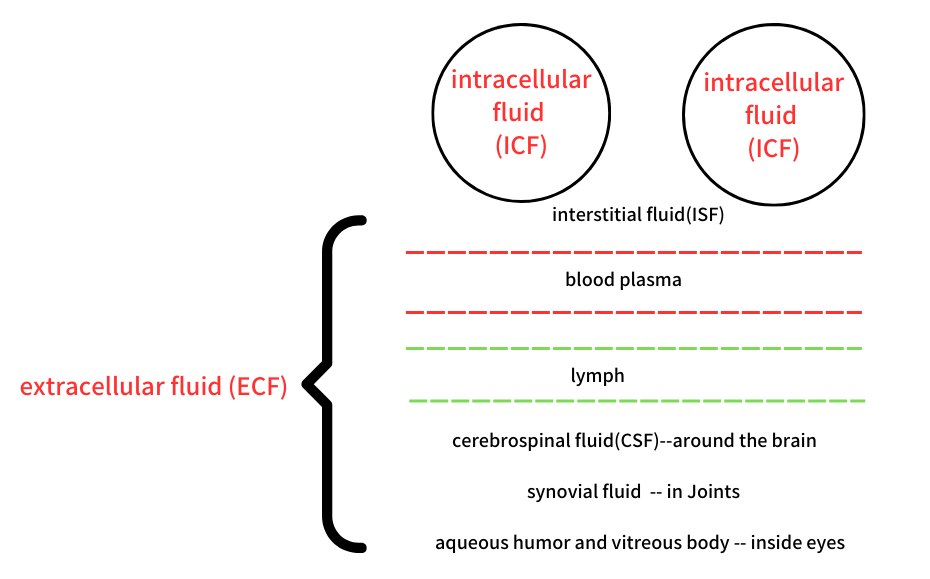
Body Fluids
Control of Homeostasis
The nervous system and the endocrine system, working together or independently, can usually bring the internal environment back into balance.
The nervous system regulates homeostasis by sending electrical signals known as nerve impulses (action potentials) to organs.
The endocrine system includes many glands that secrete hormones into the blood.
Nerve impulses typically cause rapid changes, but hormones usually work more slowly.
Both means of regulation, work toward the same end, usually through negative feedback systems.
Feedback Systems(反馈系统)
The body can regulate its internal environment through many feedback systems.
A feedback system includes three basic components — a receptor(感受器), a control center(中枢), and an effector(效应器).
A feedback system is a cycle of events in which the status of a body condition is monitored, evaluated, changed, remonitored, reevaluated, and so on.
Each monitored variable, such as body temperature, blood pressure, or blood glucose level, is termed a controlled condition.
Negative feedback system
A negative feedback(负反馈) system reverses a change in a controlled condition.
Consider the regulation of blood pressure.
Positive feedback system
A positive feedback(正反馈) system tends to strengthen or reinforce a change in one of the body’s-controlled conditions.
Normal childbirth provides a good example of a positive feedback system.
•Tissue is a group of similar cell and their intercellular(细胞间的) substance that have a similar embryological (胚胎学) origin and function together to perform a specialized activity.
•The various tissues of the body are classified in to four principal parts according to their function & structure. These are Epithelial, Connective, Muscular, and Nervous tissue.
Four groups of Tissue
•Epithelial tissue:
covers body surfaces and lines hollow organs, body cavities, and ducts. It also forms glands.
•Connective tissue:
is one of the most abundant and widely distributed tissues in the body.
•Muscle tissue:
produces movement through its ability to contract. This constitutes skeletal, smooth and cardiac muscles.
•Nerve tissue:
found in the brain, spinal cord and nerves. It responds to various types of stimuli and transmits nerve impulses.
Epithelial tissue:
•They are subdivided in to:
- Covering & lining epithelium: it forms the outer covering of external body surface and outer covering of some internal organs. It lines body cavity, interior of respiratory & gastro intestinal tracts, blood vessels & ducts and make up along with the nervous tissue (the parts of sense organs for smell, hearing, vision and touch).
- Glandular epithelium: it forms the glands.
Basement membrane
•The basement membrane is a thin extracellular layer that commonly consists of two layers, the basal lamina and reticular lamina.
•The basement membrane functions as a point of attachment and support for the overlying epithelial tissue.
•Epithelial tissue has its own nerve supply, but is it lacks its own blood supply. The blood vessels that bring in nutrients and remove wastes are located in the adjacent connective tissue.
•Exchange of substances between epithelium and connective tissue occurs by diffusion.
Connective tissue:
•Connective tissue is one of the most abundant and widely distributed tissues in the body.
•In its various forms, connective tissue has a variety of functions.
•It binds together, supports, and strengthens other body tissues; protects and insulates internal organs; compartmentalizes structures such as skeletal muscles; serves as the major transport system within the body (blood, a fluid connective tissue); is the primary location of stored energy reserves (adipose(动物脂肪), or fat tissue)
Five Types of Connective Tissue are:
(1) loose connective tissue:
•The fibers of loose connective tissue are loosely intertwined between cells.
•The types of loose connective tissue are areolar(细隙的)connective tissue, adipose(脂肪多的)tissue, and reticular (网状的)connective tissue.
(2) dense connective tissue:
•contains more numerous, thicker, and denser fibers (packed more closely) but considerably fewer cells than loose connective tissue.
•There are three types: dense regular connective tissue, dense irregular connective tissue, and elastic connective tissue.
(3) cartilage:
•Unlike other connective tissue, cartilages have no blood vessels and nerves. It consists of a dense network of collagenous fibers(胶原纤维) and elastic fibers(弹性纤维).
•Cartilages are classified in to hyaline, fibro & elastic cartilage
•Cartilage provides strength and elasticity and maintains the shape of certain organs like epiglottis(会厌), larynx, external part of the ear and Eustachian tube(耳咽管).
(4) bone tissue:
•Bones store calcium and phosphorus; house red bone marrow, which produces blood cells; and contain yellow bone marrow, a storage site for triglycerides.
•Bones are organs composed of several different connective tissues, including bone, the periosteum骨膜, red and yellow bone marrow, and the endosteum骨内膜
•Bone tissue is classified as either compact or spongy, depending on how its extracellular matrix 模型 and cells are organized.
(5) liquid connective tissue (blood tissue and lymph):
1.Blood tissue
–Blood tissue is a connective tissue with a liquid extracellular called blood plasma, a yellow fluid that consists mostly of water with a wide variety of dissolved substances—nutrients, wastes, enzymes, plasma proteins, hormones, respiratory gases, and ions. And blood cells.
2. Lymph
–Lymph is the extracellular fluid that flows in lymphatic vessels. It is a connective tissue that consists of several types of cells in a clear liquid extracellular that is similar to blood plasma.
Muscle tissue:
•Muscle tissues are grouped in to skeletal, cardiac and smooth muscle tissue.
•- Skeletal muscle tissue are attached to bones, it is voluntary, cylindrical, multinucleated & striated
•- Cardiac muscle tissue: It forms the wall of the heart; it is involuntary, uni-nucleated and striated.
•- Smooth muscle tissue: located in the wall of hallow internal structure like Blood vessels, stomach, intestine, and urinary bladder. It is involuntary and non-striated.
Nervous tissue:
•Nervous tissue contains two principal cell types. These are the neurons and the neuroglia.
•Neurons are nerve cells, sensitive to various stimuli. It converts stimuli to nerve impulse. Neurons are the structural and functional unit of the nervous system. It contains 3 basic portions. These are cell body, axons and dendrites.
•Neuroglias are cells that protect, nourish and support neurons. Clinically they are important because they are potential to replicate and produce cancerous growths.
Skeletal and Muscular System
Functions of the Bone
•1. Support: it forms the internal framework
•2. Protection: bones protect soft body organs.
•3. Movement: muscles attached to the bone to move the body and its part.
•4. Storage: fat is stored in the internal cavities of bones. Bone it self-serves as a storehouse of minerals. The most important being calcium and phosphors.
•5. Blood cell formation: it occurs with in the marrow cavities of certain bones.
Functions of the Muscles
•The function of most muscles is to produce movements of body parts.
•A few muscles function mainly to stabilize bones.
•Muscles of the Head That Produce Facial Expressions.
Functions of the Joints
•Direct connect joints--Connected bone and bone.
•Indirect connect(articulation)—perform movement
•Direct connect
1.fibrous joint
Spine of vertebra, head
2.cartilaginous joint
Cartilago costalis, Vertebrae
3.Synostosis—Hip bone, sacrum
•Indirect connect(articulation)
---Joints on the limbs
structure of Articulation
1.Articular surface--articular cartilage
2.Articular capsule
1.Fibrous membrane
2.Synovial membrane– produce synovial fluid
3.Articular cavity
The Muscles
Muscles contracting – relaxing
Muscles contracting – relaxing and Joint movement
The Muscles
•Origin:
–One end of the muscle is attached by a tendon to a bone that remains relatively stable, usually closer to the midline of the body.
•Insertion:
–The tendon on the other end of the muscle is attached to the bone moved by the muscle.
TYPES OF MOVEMENTS AT SYNOVIAL JOINTS
••Flexion弯曲
••Extension伸展
••Hyperextension过度伸展
••lateral flexion侧屈
••Abduction外展
••Adduction内收
••Circumduction环行(运动)
Flexion弯曲
•Flexion is a bending movement around a joint in a limb (as the knee or elbow) that decreases the angle between the bones of the limb at the joint.
Extension伸展
•Extension is the opposite of flexion, describing a straightening movement that increases the angle between body parts.
Hyperextension过度伸展
•Hyperextension is the joint movement extension of a body part to a maximum level or past the position of normal extension.
lateral flexion侧屈
•Lateral flexion describes the active or passive bending movement of a body part in the lateral direction, that is to say sidewards.
Abduction外展
•Abduction is movement away from the mid-line of the body.
Adduction内收
•Adduction is the movement of a body part toward the body's midline.
Circumduction环行(运动)
•Circumduction is a conical 圆锥形的movement of a limb extending from the joint (e.g. shoulder or hip) at which the movement is controlled.
•True circumduction allows for 360 degrees of movement.
Muscles move the eyeballs
Muscles that move the eyeballs are called extrinsic eye muscles because they originate outside the eyeballs (in the orbit) and insert on the outer surface of the sclera (“white of the eye”). The extrinsic eye muscles are some of the fastest contracting and most precisely controlled skeletal muscles in the body.
••Three pairs of extrinsic eye muscles control movements of the eyeballs:
••(1) superior and inferior recti (上、下直肌)
••(2) lateral and medial recti (外、内直肌)
••(3) superior and inferior obliques. (上、下斜肌)
•Central nervous system (CNS)
– Brain
– Spinal cord
•Peripheral nervous system (PNS)
–12 pairs of cranial nerves
–31 pairs of spinal nerves
Central nervous system (CNS)
•Brain
•Cerebrum
•Left hemispheres
•Right hemispheres
(Connected by corpus callosum)
•Cerebellum
•The brain Stem
–Thalamus (丘脑)
»Hypothalamus (下丘脑)
•pituitary gland(脑垂体)
–Midbrain (中脑)
–Pons (脑桥)
–Medulla oblongata(延髓)
•Sensory nerves
–Transmit messages from the body’s receptors to the CNS
–Nerve impulses pass into the spinal cord and brain
•Motor nerves
–Transmit messages from CNS to the muscles or other structures that respond to stimulate.
–Nerve impulses from the spinal cord and brain to muscles and glands
Function:
•Sensory function
–internal ---Maintain homeostasis
–External---felling
•Integrative function整合功能.
–Analyzing
–Storing (Memories)
–making decisions
–Perceptions知觉
–Behaviors
•Motor function
–Muscle movements
–Gland secrete
Peripheral nervous system (PNS)
12 pairs of cranial nerves
31 pairs of spinal nerves
PNS includes all nervous tissue outside the CNS. Components of the PNS include cranial nerves and their branches, spinal nerves and their branches, ganglia, and sensory receptors.
Sensory ---- that convey information from somatic receptors in the head, body wall, and limbs and from receptors for the special senses of vision, hearing, taste, and smell to the CNS .
Motor
Somatic nervous system (SNS)---conduct impulses from the CNS to skeletal muscles.
Autonomic nervous system (ANS) ---conduct nerve impulses from the CNS to smooth muscle, cardiac muscle, and glands. Because its motor responses are not normally under conscious control, the action of the ANS is involuntary.
Sympathetic nerves division
Parasympathetic nerves division.
•Neurons (nerve cells) possess electrical excitability, the ability to respond to a stimulus and convert it into an action potential(nerve impulse)
Parts of a Neuron
(1) a cell body - a nucleus, cytoplasm, cellular organelles
(2) Dendrites (树突)- receiving or input portions of a neuron
(3) an axon- propagates nerve impulses toward another neuron, a muscle fiber, or a gland cell.
Myelination (髓鞘 )
Axons surrounded by a multilayered lipid and protein covering, called the myelin sheath, are said to be myelinated. The sheath electrically insulates the axon of a neuron and increases the speed of nerve impulse conduction.
Axons without such a covering are said to be unmyelinated
Central nervous system (CNS)
The CNS processes many different kinds of incoming sensory information.
It is also the source of thoughts, emotions, and memories.
Most nerve impulses that stimulate muscles to contract and glands to secrete originate in the CNS.
NTEGRATIVE FUNCTIONS OF THE CEREBRUM
Wakefulness and Sleep
–hypothalamus
Learning and Memory
–cerebral cortex
– cerebellum
Hypothalamus
The hypothalamus is the major control and integration center of the ANS.
The hypothalamus receives sensory input related to visceral functions, smell, and taste, changes in temperature, and levels of various substances in blood.
Output from the hypothalamus influences autonomic centers in both the brain stem (such as the cardiovascular, salivation, swallowing, and vomiting centers) and the spinal cord (such as the defecation and urination reflex centers in the sacral spinal cord).
The corticospinal 皮质脊髓的pathways.
The corticospinal pathways conduct nerve impulses for the control of muscles of the limbs and trunk.
Neural circuits 神经回路 :
The CNS contains billions of neurons organized into complicated networks called neural circuits
•Cranial nerve : any of the nerves arising from the brainstem and exiting to the periphery of the head through skull openings.
In the human body there are 12 pairs of cranial nerves.
- Olfactory nerve: Sense of smell.
- Optic nerve: Ability to see.
- Oculomotor nerve: Ability to move and blink your eyes.
- Trochlear nerve: Ability to move your eyes up and down or back and forth.
- Trigeminal nerve: Sensations in your face and cheeks, taste and jaw movements.
- Abducens nerve: Ability to move your eyes.
- Facial nerve: Facial expressions and sense of taste.
- Auditory/vestibular nerve: Sense of hearing and balance.
- Glossopharyngeal nerve: Ability to taste and swallow.
- Vagus nerve: Digestion and heart rate.
- Accessory nerve (or spinal accessory nerve): Shoulder and neck muscle movement.
- Hypoglossal nerve: Ability to move your tongue.
•Spinal nerve: A spinal nerve is a mixed nerve, which carries motor, sensory, and autonomic signals between the spinal cord and the body.
•In the human body there are 31 pairs of spinal nerves, one on each side of the vertebral column.
•The somatic nervous system (SNS or voluntary nervous system) is the part of the peripheral nervous system associated with the voluntary control of body movements via skeletal muscles.
•The somatic nervous system consists of afferent nerves or sensory nerves, and efferent nerves or motor nerves.
Ganglia (神经节) are small masses of nervous tissue, consisting primarily of neuron cell bodies, that are located outside the brain and spinal cord.
Ganglia are closely associated with cranial and spinal nerves.
Sympathetic trunk ganglia
sympathetic trunk ganglia are arranged anterior and lateral to the vertebral column, one on either side. Typically, there are 3 cervical, 11 or 12 thoracic, 4 or 5 lumbar, 4 or 5 sacral sympathetic trunk ganglia, and 1 coccygeal ganglion尾神经节.
The right and left coccygeal ganglia are fused together and usually lie at the midline.
Preganglionic neuron
The first of the two motor neurons in any autonomic motor pathway is called a preganglionic neuron.
Its cell body is in the brain or spinal cord, and its axon exits the CNS as part of a cranial or spinal nerve.
Postganglionic Neurons
the postganglionic neuron lies entirely outside the CNS.
Its cell body and dendrites are located in an autonomic ganglion, where it forms synapses with one or more preganglionic axons.
• Parasympathetic ganglia are the autonomic ganglia of the parasympathetic nervous system.
Nerve impulse
•A nerve impulse is the way nerve cells (neurons) communicate with one another. Nerve impulses are mostly electrical signals along the dendrites to produce a nerve impulse or action potential动作电位.
•The action potential is the result of ions moving in and out of the cell. Specifically, it involves potassium (K+) and sodium (Na+) ions.
•The ions are moved in and out of the cell by potassium channels, sodium channels and the sodium-potassium pump.
Ion Channels
•When ion channels are open, they allow specific ions to move across the plasma membrane.
A synapse is the functional junction between one neuron and another, or between a neuron and an effector such as a muscle or a gland.
Electrical Synapses
action potentials (impulses) conduct directly between adjacent cells through structures called gap junctions.
Chemical Synapses
--- NEUROTRANSMITTERS(神经递体)
acetylcholine (ACh)乙酰胆碱
amino acids氨基酸
Gamma aminobutyric acid(GABA) γ-氨基丁酸
Norepinephrine (NE)去甲肾上腺素
5-hydroxytryptamine (5-HT) 5-羟色胺
The autonomic nervous system contributes to homeostasis by responding to subconscious visceral sensations and exciting or inhibiting smooth muscle, cardiac muscle, and glands.
ANS includes autonomic sensory neurons, integrating centers in the CNS, and autonomic motor neurons.
The ANS usually operates without conscious control.
A continual flow of nerve impulses from
(1) autonomic sensory neurons in visceral organs and blood vessels propagate into
(2) integrating centers in the central nervous system (CNS). Then, impulses in
(3) autonomic motor neurons propagate to various effector tissues, thereby regulating the activity of smooth muscle, cardiac muscle, and many glands.
Sympathetic nerves division
The sympathetic nervous system controls “fight-or-flight” response. Danger or stress activates the sympathetic nervous system:
- Eyes: Enlarge pupils to let more light in and improve vision.
- Heart: Increase heart rate to improve the delivery of oxygen to other parts of body.
- Lungs: Relax airway muscles to improve oxygen delivery to lungs.
- Digestive tract: Slow down digestion so its energy is diverted to other areas of the body.
- Liver: Activate energy stores in liver to an energy that can be used quickly.
Parasympathetic nerves division.
parasympathetic nervous system’s job is usually to relax or reduce the body’s activities.
- Eyes: It constricts pupils to limit how much light enters the eyes. It also makes changes that can help improve close-up vision, and causes tear production in the eyes.
- Nose and mouth: It makes glands in mouth produce saliva, and glands in nose produce mucus. This can be helpful with digestion and breathing during times of rest.
- Lungs: It tightens airway muscles and ultimately reduces the amount of work the lungs do during times of rest.
- Heart: It lowers your heart rate and the pumping force of your heart.
- Digestive tract: It increases the rate of digestion and diverts energy to help digest food. It also make pancreas to release insulin, helping body break down sugars.
- Waste removal: It relaxes the muscles that help the control when urinate or defecate.
- Reproductive system: It manages some of the body’s sexual functions.
The eyes are complex organs that allow us to perceive the world around us through the sense of vision. The process of how the eyes work involves several key components and steps:
Light Entry: The process begins when light from the external environment enters the eye through the cornea, which is the clear, curved front surface of the eye. The cornea helps focus incoming light.
Refraction: As light passes through the cornea, it undergoes refraction, which means the light rays are bent. This bending of light is crucial for focusing the image on the retina at the back of the eye.
Aqueous Humor: After passing through the cornea, light enters the anterior chamber of the eye, which is filled with a clear, watery fluid called aqueous humor. This fluid helps maintain the shape of the eye and provides nutrients to the cornea and lens.
Pupil and Iris: The amount of light entering the eye is regulated by the pupil, which is the black circular opening at the center of the eye. The iris, the colored part of the eye, controls the size of the pupil. In bright conditions, the pupil constricts to reduce the amount of light entering the eye, and in dim conditions, it dilates to allow more light in.
Lens: Behind the iris is the lens, a clear, flexible structure that further refracts light to focus it onto the retina. The shape of the lens can change, allowing the eye to focus on objects at different distances through a process called accommodation.
Retina: The retina is the light-sensitive tissue at the back of the eye. It contains millions of specialized cells called photoreceptors, which come in two types: rods and cones. Rods are responsible for low-light vision and peripheral vision, while cones are responsible for color vision and detailed central vision.
Photoreceptor Activation: When light reaches the retina, it stimulates the photoreceptor cells. This stimulation causes a chemical change in the cells, which generates electrical signals.
Signal Transmission: The electrical signals generated by the photoreceptors are transmitted through several layers of cells within the retina, ultimately converging on the ganglion cells. The ganglion cells transmit the signals as nerve impulses along the optic nerve to the brain.
Optic Nerve: The optic nerve is a bundle of millions of nerve fibers that connect the eye to the brain. It carries the visual information from the retina to the brain's visual processing centers.
Visual Processing: In the brain, the visual information is processed and interpreted, allowing us to perceive shapes, colors, motion, and depth. Different parts of the brain, including the primary visual cortex, are involved in different aspects of visual processing. Finally, the brain interprets the processed visual information, allowing us to perceive the world around us and make sense of the images we see.
This process of how the eyes work allows us to see and interpret our surroundings, making vision one of the most important and complex senses in the human body.
The ears are intricate sensory organs responsible for the sense of hearing and, in the case of the inner ear, also for balance.
Anatomy of the Ear: The ear is divided into three main parts:
- Outer Ear: This includes the visible portion of the ear (pinna or auricle), the ear canal (external auditory meatus) and the eardrum (tympanic membrane). The pinna captures sound waves from the environment and directs them into the ear canal.
- Middle Ear: The ear canal connects to the middle ear, where three small bones called the ossicles are located: the hammer (malleus), anvil (incus), and stirrup (stapes). These bones transmit and amplify sound vibrations from the eardrum (tympanic membrane) to the inner ear. The middle ear is also connected to the back of the throat through the Eustachian tube, which helps equalize air pressure. The oval window is a small membrane-covered in the middle ear. The oval window is crucial in transmitting sound vibrations from the middle ear to the fluid-filled cochlea, where the actual process of hearing begins. It serves as a connection point between the mechanical vibrations of the ossicles and the fluid-filled environment of the inner ear, allowing for the efficient transfer of sound energy.
- Inner Ear: The inner ear contains the cochlea, a spiral-shaped, fluid-filled structure responsible for converting sound vibrations into electrical signals that the brain can interpret. It also houses the vestibular system, which is responsible for maintaining balance. The semicircular canals are a set of three fluid-filled, tubular structures located within the inner ear. They play a crucial role in the body's sense of balance and spatial orientation, allowing us to maintain our balance and coordinate movements.
Hearing Process: The process of hearing involves several steps:
- Sound Waves: Sound waves from the environment enter the ear canal and travel to the eardrum.
- Eardrum Vibrations: When sound waves reach the eardrum, they cause it to vibrate. The eardrum separates the outer ear from the middle ear.
- Ossicle Movement: The vibrations from the eardrum are transmitted to the ossicles in the middle ear. These bones amplify the vibrations.
- Cochlear Fluid: The stirrup bone in the middle ear transmits vibrations to the oval window, a membrane-covered opening in the cochlea. This creates pressure waves within the cochlear fluid.
- Hair Cell Activation: Within the cochlea, specialized hair cells are responsible for translating the pressure waves into electrical signals. The movement of the fluid causes the hair cells to bend. This bending action triggers the release of neurotransmitters, creating electrical impulses in the auditory nerve.
- Auditory Nerve: The electrical impulses generated by the hair cells travel along the auditory nerve to the brain's auditory cortex, where they are processed and interpreted as sound.
Balance (Vestibular) System:The inner ear's vestibular system plays a crucial role in maintaining balance and spatial orientation. It consists of semicircular canals filled with fluid and tiny hair cells that detect head movements and changes in position. This information is sent to the brain, which helps us maintain our balance and coordination.
-
Endocrine
-
Glands
-
Blood
-
Heart
-
Respiratory
-
Digestive
-
Urinary
Endocrine: The endocrine system is the system of glands, each of which secretes different types of hormones directly into the bloodstream to maintain homeostasis.
The endocrine system is an information signal system like the nervous system.The endocrine system's effects are slow, and prolonged in their response, lasting from a few hours up to weeks. The nervous system sends information very quickly, and responses are generally short lived.Hormones: regulate various human functions, including metabolism, growth and development, tissue function, sleep, and mood.Endocrine System•Pineal Gland (melatonin)•Pituitary Gland•Thyroid Gland•Parathyroid Gland•Pancreatic islets•Adrenal Glands•Ovaries (Female)•Testes (Male)Pituitary Gland
•Anterior Pituitary
Human Growth Hormone (HGH)生长素
Thyroid-stimulating Hormone (TSH)
Adrenocorticotropic Hormone (ACTH)
Prolactin (PRL)催乳素
Follicle-Stimulating Hormone(FSH)
luteinizing hormone(LH) 黄体生成素
•Posterior Pituitary
Antidiuretic hormone(ADH)抗利尿激素
Oxytocin (OT) 催产素
Human Growth Hormone (HGH)--stimulate general body growth and regulate aspects of metabolism.
•Dwarfism 矮小征
•Gigantism 巨人症
•Acromegaly 肢端肥大症
Thyroid-stimulating Hormone (TSH)--controls the secretions and activities of the thyroid gland.
Adrenocorticotropic Hormone (ACTH)-- stimulate secrete glucocorticoids
Prolactin (PRL)催乳素-- promotes mike secretion
Follicle-Stimulating Hormone(FSH)
-- oocyte 卵细胞 , estrogen 雌激素 (Female)
-- sperm (Male)
luteinizing hormone(LH)
-- estrogen , progesterone孕激素, ovulation排卵,
corpus luteum黄体(Female)
-- testosterone(Male)睾丸素
Antidiuretic hormone(ADH)
-- decreasing urine
--decreases water loss through perspiration
-- constricting arterioles
Oxytocin (OT) 催产素
--uterus
--mammary glands
Hormone of the Thyroid Gland
•Thyroxine (T4) (甲状腺素)
•Triiodothyronine (T3) (三碘甲状腺氨酸)
It plays vital roles in metabolism, heart and muscle function, brain development, and maintenance of bones.
•Calcitonin (降钙素):Regulate calcium levels in blood by decreasing it.
Hormone of Parathyroid Gland
•Parathyroid hormone: Regulation of calcium levels in the blood by increasing it.
Hormone of the Pancreatic islets
•Glucagon (胰高血糖素 )—alpha cells--Help regulate blood glucose (sugar) levels. Glucagon increases blood sugar level and prevents it from dropping too low,
•Insulin(胰岛素)– beta cells--Allow glucose to enter cells to be used as energy and to maintain the amount of glucose found in the bloodstream within normal levels.
Hormone of the Adrenal Glands
•Medulla (髓质)—
–Epinephrine (肾上腺素)
–Norepinephrine (去甲肾上腺素 )
Epinephrine and norepinephrine are similar chemicals that act as both neurotransmitters and hormones in the body.
Both play an important role in the body's flight response, their release into the bloodstream causes increases in blood pressure, heart rate, and blood sugar levels.
•Cortex (皮质)—
–Mineralocorticoids (盐皮质激素)--Regulate salt and water balances
–Glucocorticoids (糖皮质激素)--They are anti-inflammatory in all tissues, and control metabolism in muscle, fat, liver and bone. Glucocorticoids also affect vascular tone, and in the brain influence mood, behaviour and sleep‒wakefulness cycles.
Androgens in men, as well as in women, are maintenance of
(i) reproductive competency,
(ii) cardiac health,
(iii) appropriate bone remodeling, muscle tone, and
(iv) brain function
..
Cardiovascular System
•The cardiovascular system (cardio- heart; vascular- blood vessels) consists of three interrelated components: blood, the heart, and blood vessels.
Blood
•Blood contributes to homeostasis by transporting oxygen, carbon dioxide, nutrients, and hormones to and from your body’s cells. It helps regulate body pH and temperature and provides protection against disease through phagocytosis and the production of antibodies.
Functions of Blood
1. Transportation
–oxygen from the lungs to the cells of the body
–carbon dioxide from the body cells to the lungs for exhalation.
–It carries nutrients from the gastrointestinal tract to body cells
–hormones from endocrine glands to other body cells.
– Blood also transports heat and waste products.
2. Regulation.
–maintain homeostasis of all body fluids.
–Blood helps regulate pH.
–adjust body temperature
3. Protection.
–Blood can clot, which protects against its excessive loss.
–white blood cells protect against disease.
Physical Characteristics of Blood
•Blood is denser than water and feels slightly sticky.
•The temperature of blood is 38C.
•It has a slightly alkaline pH ranging from 7.35 to 7.45.
•The color of blood varies with its oxygen content. When it has a high oxygen content, it is bright red. When it has a low oxygen content, it is dark red.
•Blood constitutes about 20% of extracellular fluid. The blood volume is 5 to 6 liters in an average-sized adult male and 4 to 5 liters in an average-sized adult female.
•Several hormones, regulated by negative feedback, ensure that blood volume.
Components of Blood
(1)blood plasma--a watery liquid
(2)formed elements, which are cells and cell fragments.
Blood Plasma
•When the formed elements are removed from blood, a straw-colored(little yellow) liquid called blood plasma (or simply plasma) is left.
•Blood plasma is about 91.5% water and 8.5% solutes, most of which (7% by weight) are proteins.
Blood proteins
•albumins (54% of plasma proteins)
–Smallest and most numerous blood plasma proteins; produced by liver. Function as transport proteins for several hormones and fatty acids.
•globulins (38%)
–Produced by liver and by plasma cells (B lymphocytes) Function as Antibodies help attack viruses and bacteria. Transport iron, lipids, and fat-soluble vitamins.
•fibrinogen (7%)
–Produced by liver. Function for blood clotting
formed elements of the blood
I. Red blood cells
II. White blood cells
1. Neutrophils
2. Lymphocytes
3. Monocytes
4. Eosinophils
5. Basophils
III. Platelets
Red blood cells (RBCs)
•RBCs contain the oxygen-carrying protein hemoglobin.
•RBCs lack a nucleus and other organelles
•Function:
–oxygen transport
–Hemoglobin also transports about 23% of the total carbon dioxide.
•Red blood cells live only about 120 days
•Production of RBCs in the red bone marrow which located in the microscopic spaces of spongy bone tissue.
•Ruptured red blood cells are removed from circulation and destroyed by macrophages in the spleen and liver, and the breakdown products are recycled.
Normal | ||
RBC | Male: 4.7 – 6.1 | 1012 /L or tera/L |
Female: 3.5 – 5.5 | 1012 /L or tera/L | |
HB (Hemoglobin) | Male: 136 to 175 | G / L |
Female: 120 to 155 | G / L | |
Test | Lower | Higher |
RBC | Anemia | Relative --Lose Plasm, Absolute – Polycythemia |
Hemoglobin |
White blood cells (WBCs)
•In a healthy body, some WBCs, especially lymphocytes, can live for several months or years, but most live only a few days.
•An increase in the number of circulating WBCs usually indicates inflammation or infection.
•During a period of infection, WBCs may live only a few hours.
•WBCs are far less numerous than red blood cells; at about 5000–10,000 cells/L of blood
Laboratory examination- WBC Differential
Test | Normal Range Results | Units |
Neutrophils (Neutrophil granulocyte) | 2.0 -8.0 | 109 /L or giga/L |
Lymphocytes | 1.0 – 4.0 | 109 /L or giga/L |
Monocytes | <0.9 | 109 /L or giga/L |
eosinophils | <0.8 | 109 /L or giga/L |
basophils | <0.3 | 109 /L or giga/L |
Granulocytes immature | <0.2 | 109 /L or giga/L |
Test | Higher | Lower |
Neutrophils | Acute infection Big bleeding or Injure Blood system illness Cancer | Infection Blood system illness X-ray or Toxin Immune system illness |
Lymphocytes | Infection Cancer | Use adrenal cortex hormone X-ray Immune system illness |
Monocytes | Infection Blood system illness | N/A |
eosinophils | hypersensitivity disease parasitic disease | N/A |
basophils | hypersensitivity disease Cancer | N/A |
granulocytes immature | Acute infection Big bleeding leukaemia | N/A |
PLATELETS
•Platelets produced in red bone marrow and then enter the blood circulation.
•150,000 to 450,000 platelets are present in each L of blood.
•Platelets help stop blood loss from damaged blood vessels by forming a platelet plug.
Platelets have a short life span, normally just 5 to 9 days.
Aged and dead platelets are removed in the spleen and liver.
Test | Normal Range Results | Units |
Platelets | 150 - 450 | 109 /L or giga/L |
Test | Lower | Higher |
Platelets | Disorders of platelet production Platelets consumption increase Platelets abnormal distribution | Myeloproliferative disorders Reactivity increased |
Platelet plug formation
•A platelet plug can stop blood loss completely if the hole in a blood vessel is small enough.
bone marrow transplant
•A bone marrow transplant is the replacement of cancerous or abnormal red bone marrow with healthy red bone marrow in order to establish normal blood cell counts.
•The red bone marrow is usually removed from the iliac crest of the hip bone and then injected into the recipient’s vein, much like a blood transfusion. The injected marrow migrates to the recipient’s red bone marrow cavities, where the donor’s stem cells multiply. If all goes well, the recipient’s red bone marrow is replaced entirely by healthy, noncancerous cells.
Cardiovascular System-Heart
•The heart pumps blood through blood vessels to all body tissues.
•Heart beats about 100,000 times every day
Myocardial Thickness and Function
•The thickness of the myocardium of the four chambers varies according to each chamber’s function.
•The thin-walled atria deliver blood under less pressure into the adjacent ventricles.
•Because the ventricles pump blood under higher pressure over greater distances, their walls are thicker
CARDIAC OUTPUT
•Cardiac output (CO) is the volume of blood ejected from the left ventricle (or the right ventricle) into the aorta (or pulmonary trunk) each minute. Cardiac output equals the stroke volume (SV), the volume of blood ejected by the ventricle during each contraction, multiplied by the heart rate (HR), the number of heartbeats per minute:
CO = SV X HR
(mL/min) (mL/beat) (beats/min)
•In a typical resting adult male, stroke volume averages 70mL/beat, and heart rate is about 75 beats/min. Thus, average cardiac output is CO = 70 mL/beat X 75 beats/min= 5250 mL/min= 5.25 L/min
•This volume is close to the total blood volume, which is about 5 liters in a typical adult male.
Autonomic Regulation of Heart Rate
•Nervous system regulation of the heart originates in the cardiovascular center in the medulla oblongata.
•This region of the brain stem receives input from a variety of sensory receptors and from higher brain centers.
•The cardiovascular center then directs appropriate output by increasing or decreasing the frequency of nerve impulses in both the sympathetic and parasympathetic branches of the ANS
•Sympathetic neurons extend from the medulla oblongata into the spinal cord. From the thoracic region of the spinal cord, sympathetic cardiac accelerator nerves extend out to the SA node, AV node, and most portions of the myocardium.
•Parasympathetic nerve impulses reach the heart via the right and left vagus (X) nerves. Vagal axons terminate in the SA node, AV node, and atrial myocardium. They release ACH (acetylcholine), which decreases heart rate.
Chemical Regulation of Heart Rate
1. Hormones. E (Epinephrine) and NE (norepinephrine) (from the adrenal medullae) enhance the heart’s pumping effectiveness.
2. Cations. K, Ca, and Na—have a large effect on cardiac function.
–Elevated blood levels of K or Na decrease heart rate and contractility.
–A moderate increase intracellular Ca level speeds heart rate and strengthens the heartbeat.
Other Factors in Heart Rate Regulation
•Age, gender, physical fitness, and body temperature also influence resting heart rate.
•A newborn baby is likely to have a resting heart rate over 120 beats/min; the rate then gradually declines throughout life.
•Adult females often have slightly higher resting heart rates than adult males
•Regular exercise tends to bring resting heart rate down in both sexes.
CAPILLARY EXCHANGE
Capillary exchange: the movement of substances between blood and interstitial fluid.
•Diffusion-- The most important method of capillary exchange is simple diffusion. Many substances, such as oxygen (O2), carbon dioxide (CO2), glucose, amino acids, and hormones, enter and leave capillaries by simple diffusion.
FACTORS AFFECTING BLOOD FLOW
•Blood Pressure
•Vascular Resistance
•Venous Return
Lymphatic System
•Lymph Organs:
–Lymph nodes
–Tonsils
–Thymus
–Spleen
•lymph-vessel
–Lymphatic capillary
–Lymphatic vessel
–Lymphatic trunk
–Lymphatic duct
–Thoracic duct or Right Lymphatic Duct
Functions of the Lymphatic System
The lymphatic system has three primary functions:
1.Drains excess interstitial fluid.
Lymphatic vessels drain excess interstitial fluid from tissue spaces and return it to the blood.
2. Transports dietary lipids.
Lymphatic vessels transport lipids and lipid-soluble vitamins (A, D, E, and K) absorbed by the gastrointestinal tract.
3. Carries out immune responses.
Protects against invasion through immune responses.
Respiratory system Functions
1. Provides for gas exchange—intake of O2 for delivery to body cells and elimination of CO2 produced by body cells.
2. Helps regulate blood PH(Potential of hydrogen).
3. Contains receptors for the sense of smell, filters inspired air, produces vocal sounds, and excretes small amounts of water and heat.
The process of gas exchange in the body, called respiration, has three basic steps:
•1. Pulmonary ventilation, or breathing, is the inhalation and exhalation of air and involves the exchange of air between the atmosphere and the alveoli of the lungs.
•2. External (pulmonary) respiration is the exchange of gases between the alveoli of the lungs and the blood in pulmonary capillaries. In this process, pulmonary capillary blood gains O2 and loses CO2.
•3. Internal (tissue) respiration is the exchange of gases between blood in systemic capillaries and tissue cells. In this step the blood loses O2 and gains CO2. Within cells, the metabolic reactions that consume O2 and give off CO2.
The Nasal Cavities
•The lining of the nasal cavities is a mucous membrane, which contains many blood vessels that bring heat and moisture to it. The cells of this membrane secrete a large amount of fluid.
•1. Foreign bodies, such as dust particles and pathogens, are filtered out by the hairs of the nostrils or caught in the surface mucus.
•2. Air is warmed by the blood in the vascular membrane.
•3. Air is moistened by the liquid secretion
•4. Olfaction function
Paranasal sinuses(鼻旁窦)
•The Paranasal sinuses are small cavities lined with mucous membrane in the bones of the skull. The sinuses communicate with the nasal cavities, and they are highly susceptible to infection.
•Paranasal sinuses are the frontal, sphenoid, ethmoid, and maxillae.
•Besides producing mucus, the paranasal sinuses serve as resonating chambers for sound as we speak or sing.
The Pharynx
•The muscular pharynx (throat) carries air into the respiratory tract and foods and liquids into the digestive system.
•The upper portion located immediately behind the nasal cavity is called the nasopharynx , the middle section located behind the mouth is called the oropharynx, and the lowest portion is called the laryngeal pharynx.
•This last section opens into the larynx toward the front and into the oesophagus toward the back.
The Larynx
•The larynx is considerably larger in the male than in the female;
•At the upper end of the larynx are the vocal cords, which serve in the production of speech. They are set into vibration by the flow of air from the lungs.
•A difference in the size of the larynx is what accounts for the difference between the male and female voices; because a man’s larynx is larger than a woman’s, his voice is lower in pitch.
•The nasal cavities, the sinuses, and the pharynx all serve as resonating chambers for speech.
Vocal cords
•The mucous membrane of the larynx forms two pairs of folds: a superior pair called the ventricular folds (false vocal cords) and an inferior pair called the vocal folds (true vocal cords).
•Pitch is controlled by the tension on the vocal folds. If they are pulled taut by the muscles, they vibrate more rapidly, and a higher pitch results. Decreasing the muscular tension on the vocal folds causes them to vibrate more slowly and produce lower-pitch sounds. Due to the influence of androgens (male sex hormones), vocal folds are usually thicker and longer in males than in females, and therefore they vibrate more slowly.
Trachea
•The trachea is a tube that extends from the lower edge of the larynx to the upper part of the chest above the heart. It has a framework of cartilages to keep it open.
•The purpose of the trachea is to conduct air between the larynx and the lungs. The trachea divides into two bronchi which enter the lungs.
•The right bronchus is considerably larger in diameter than the left and extends downward in a more vertical direction. Therefore, if a foreign body is inhaled, it is likely to enter the right lung.
The Bronchi and Bronchioles
•The trachea divides into two bronchi which enter the lungs.
•The right bronchus is considerably larger in diameter than the left and extends downward in a more vertical direction. Therefore, if a foreign body is inhaled, it is likely to enter the right lung.
•Each bronchus enters the lung at a notch or depression called the hilus or hilum. The blood vessels and nerves also connect with the lung in this region.
•On entering the lungs, the primary bronchi divide to form smaller bronchi—the secondary (lobar) bronchi, one for each lobe of the lung. The secondary bronchi continue to branch, forming still smaller bronchi, called tertiary (segmental) bronchi, that divide into bronchioles. Bronchioles in turn branch repeatedly, and the smallest ones branch into even smaller tubes called terminal bronchioles.
•This extensive branching from the trachea resembles an inverted tree and is commonly referred to as the bronchial tree.
The Lungs
•The lungs are the organs in which external respiration takes place through the extremely thin and delicate lung tissues.
•Each bronchus enters the lung at the hilus and immediately subdivides. The bronchi subdivide again and again, forming progressively smaller divisions, the smallest of which are called bronchioles. The bronchi contain small bits of cartilage, which give firmness to the walls and serve to hold the passageways open so that air can pass in and out easily.
•However, as the bronchi become smaller, the cartilage decreases in amount. In the bronchioles there is no cartilage at all; what remains is mostly smoothly muscle, which is under the control of the autonomic nervous system.
alveoli
At the end of each of the smallest subdivisions of the bronchial tree, called terminal bronchioles, is a cluster of air sacs, resembling a bunch of grapes. These sacs are known as alveoli.
Each alveolus is a single-cell layer of squamous (flat) epithelium. This very thin wall provides easy passage for the gases entering and leaving the blood as it circulates through millions of tiny capillaries of the alveoli.
Alveolus one of the millions of tiny air sacs in the lungs
through which gases is exchanged between the outside air and the blood.
Pulmonary ventilation
1.Inspiration (Inhalation) is the drawing of air into the lungs.
2. Expiration (Exhalation) is the expulsion of air from the lungs.
•Air moves into the lungs when the air pressure inside the lungs is less than the air pressure in the atmosphere. Air moves out of the lungs when the air pressure inside the lungs is greater than the air pressure in the atmosphere.
Physiology of Respiration inhalation
•In inhalation, the respiratory muscles contract to enlarge the thoracic cavity. The diaphragm contract that result in an increase in the vertical dimension of the chest. The rib cage is also moved upward and outward by contraction of the external intercostals muscles and, during exertion, by contraction of other muscles of the neck and chest. During quiet breathing, the movement of the diaphragm accounts for most of the increase in thoracic volume.
•As the thoracic cavity increases in size, gas pressure within the cavity decreases. When the pressure drops to slightly below atmospheric pressure, air is drawn into the lungs.
Physiology of Respiration exhalation
•In exhalation, the passive phase of breathing, the muscles of respiration relax, allowing the ribs and diaphragm to return to their original positions. The tissues of the lung are elastic and recoil during exhalation. During forced exhalation, the internal intercostals muscles and the muscles of the abdominal wall contracts, pulling the bottom of the rib cage in and down. The abdominal viscera are also pushed upward against the diaphragm.
•As the thoracic cavity decreases in size, gas pressure within the cavity increases. The pressure exhaust the air into atmospheric.
Regulation of Respiration
•Regulation of respiration is a complex process that must keep pace with moment-to-moment changes in cellular oxygen requirements and carbon dioxide production. Regulation depends primarily on the respiratory control centers located in the medulla and pons of the brain stem. Nerve impulses from the medulla are modified by the centers in the pons.
•Respiration is regulated so that the levels of oxygen, corbon dioxide, and acid are kept within certain limits. The control centers regulate the rate, depth, and rhythm of respiration.
Respiration control
•Importance control of respiration are the chemoreceptors. These receptors are found in the carotid 颈动脉and aortic bodies, as well as out side the medulla of the brain stem.
•These bodies contain many small blood vessels and sensory neurons, which are sensitive to decreases in oxygen supply as well as to increases in carbon dioxide and acidity (H+).
•Impulses are sent to the brain from the receptors in the carotid and aortic bodies. The receptor cells outside the medulla are affected by the concentration of hydrogen ion in cerebrospinal fluid (CSF) as determined by the concentrations of carbon dioxide in the blood.
Pleural Cavity
The pleural cavity around the lungs is an air-tight space with a partial vacuum, which causes the pressure in this space to be less than atmospheric pressure. Because the pressure inside the lungs is higher than that in the surrounding pleural cavity, the lungs tend to remain inflated.
The entire thoracic cavity is flexible, capable of expanding and contracting along with the lungs.
Pleura membrane that lines the pleural cavity and covers the lungs
Digestive system - Alimentary system
General Function
•Digestion is the process of breaking down food by mechanical and enzymatic action in the alimentary canal into substances that can be used by the body.
•After digestion, food must be carried to the cells in every part of the body by the circulation. The transfer of food into the circulation is called absorption.
•Digestion and absorption are the two chief functions of the digestive system.
•It also absorbs water, vitamins, and minerals, and eliminates wastes from the body
Digestive system composition
•For our purpose the digestive system may be divided into two groups of organs:
•1. The digestive tract, a continuous passageway beginning at the mouth, where food is taken in, and terminating at the anus, where the solid waste products of digestion are expelled from the body
•2. The accessory organ, which are necessary for the digestive process but are not a direct part of the digestive tract. They release substances into the digestive tract through ducts.
The Digestive Tract
•The digestive tract, is a muscular tube extending through the body. It is composed of several parts:
the mouth, pharynx, esophagus, stomach, small intestine, and large intestine.
•It is more commonly referred to as the gastrointestinal (Gl) tract because of the major importance of the stomach and intestine in the process of digestion.
The Mouth
•The mouth, also called the oral cavity, is where a substance begins its travels through the digestive tract
•The mouth has three digestive functions:
•1. To receive food, a process called ingestion
•2. To prepare food for digestion
•3. To begin the digestion of starch.
•The oral cavity also contains the teeth. A child between 2 and 6 years of age has 20 teeth; an adult with a complete set of teeth has 32.
The tongue
•Into this space projects a muscular organ, the tongue, which is used for chewing and swallowing, and is one of the principal organs of speech.
•The tongue has on its surface a number of special organs, called taste buds, by means of which taste sensations (bitter, sweet, sour, or salty) can be differentiated.
The Salivary Glands
•It is manufactured mainly by three pairs of glands that function as accessory organs:
•1. The parotid glands, the largest of the group, are located below and in front of the ear.
•2. The submandibular, or sumaxillary, glands are located near the body of the lower jaw
•3. The sublingual glands are under the tongue.
•All these glands empty by means of ducts into the oral cavity.
The Salivary Glands
•While food in the mouth, it is mixed with saliva, one purpose of which is to moisten the food and facilitate the processes of chewing, and swallowing.
•Saliva also helps keep the teeth and mouth clean and reduce bacterial growth.
•This watery mixture contains mucus and an enzyme called salivary amylase淀粉酶, which begins the digestive process by converting starch to sugar.
The Pharynx
•Food is forced into the pharynx by the tongue. When food reaches the opening, sensory receptors respond and initiate an involuntary swallowing reflex.
•The uvula is elevated to prevent food from entering the nasopharynx.
•The epiglottis drops downward to prevent food from entering the larynx and trachea in order to direct the food into the esophagus.
•Peristaltic movements propel the food from the pharynx into the esophagus.
Bolus & Peristalsis
•In swallowing, a small portion of chewed food mixed with saliva, called a bolus, is pushed by the tongue into the pharynx, swallowing occurs rapidly by an involuntary reflex action.
•Peristaltic movements propel the food from the pharynx into the esophagus and then to the stomach.
Esophagus
•Esophagus, a muscular tube about 25cm (10 inches) long that carries food into the stomach.
•No additional digestion occurs in the esophagus.
Stomach
•The stomach serves as a storage pouch, digestive organ, and churn搅拌. When the stomach is empty, the lining forms many folds. These folds disappear as the stomach expands.
•Special cells in the lining of the stomach secrete the two main components of gastric juice are:
•1. Hydrochloric acid (HCL)
•2. Pepsin胃蛋白酶, a protein-digesting enzyme. This enzyme is produced in an inactive form and is activated only when food enters the stomach and HCL is produced.
chyme
•The semi-liquid mixture of gastric juice and food that leaves the stomach to enter the small intestine is called chyme.
The Small Intestine
•The wall of the duodenum contains glands that secrete large amounts of mucus to protect the small intestine from the strongly acid chyme entering from the stomach.
•Cells of the small intestine also secrete enzymes that digest proteins and carbohydrates. In addition, digestive juices from the liver and pancreas enter the small intestine through a small opening in the duodenum.
•Most of the digestive process takes place in the small intestine under the effects of these juices.
•Most absorption of digested food also occurs through the walls of the small intestine.
•To increase the surface area of the organ for this purpose, the mucosa is formed into millions of tiny, finger-like projections, called villi, which give the inner surface a velvety appearance.
The Large Intestine
•Any material that cannot be digested as it passes through the digestive tract must be eliminated from the body.
•In addition, most of the water secreted into the digestive tract for proper digestion must be reabsorbed into the body to prevent dehydration.
•The storage and elimination of undigested waste and the reabsorption of water are the functions of the large intestine.
•Large quantities of mucus, but no enzymes, are secreted by the large intestine. At intervals, usually after meals, the involuntary muscles within the walls of the large intestine propel solid waste material, called feces or stool, toward the rectum. This material is then eliminated from the body by both voluntary an involuntary muscle actions, a process called defecation.
•While the food residue is stored in the large intestine, bacteria that nomlally live in the colon act on it to produce vitamin K and some of the B-complex vitamins. As mentioned systemic antibiotic therapy may destroy these bacteria and others living In the large intestine, causing undesirable side effects.
Function of Liver
•1. The storage of glucose (simple sugar) in the form of glycogen. When the blood sugar level falls below normal, liver cells convert glycogen to glucose and release it into the bloodstream; this serves to restore the normal concentration of blood sugar.
•2. The formation of blood plasma proteins, such as albumin, globulins, and clotting factors
•3. The synthesis of urea, a waste product of protein metabolism. Urea is released into the blood and transported to the kidneys for elimination.
•4. The modification of fats, so cells all over the body can use them more efficiently.
•5. The manufacture of bile. (Digestive function)
•6. The destruction of old red blood cells. The pigment released from these cells in both the liver and the spleen is eliminated in the bile. This pigment (bilirubin) gives the stool its characteristic dark color.
•7. The detoxification (removal of the poisonous properties) of harmful substances such as alcohol and certain drugs
•8. The storage of some vitamins and iron.
Digestive function of the liver
•The main digestive function of the liver is the production of bile. The salts contained in bile act like a detergent to emulsify使乳化 fat, that is, to break up fat into small droplets that can be acted on more effectively by digestive enzymes.
•Bile also aids in the absorption of fat from the small intestine. Bile leaves the lobes of the liver by two ducts that merge to the common hepatic duct.
•After collecting bile from the gallbladder, this duct, now called common bile duct, delivers bile into the duodenum.
The Gallbladder
•The gallbladder is a muscular sac on the inferior surface of the liver that serves as a storage pouch for bile.
•Although the liver may manufacture bile continuously, the body is likely to need it only a few times a day. Consequently, bile from the liver flows into the hepatic ducts and then up through the cystic duct connected with the gallbladder.
•When chyme enters the duodenum, the gallbladder contracts, squeezing bile through the cystic duct and into the common bile duct leading to the duodenum.
The Pancreas
•The pancreas produces enzymes that digest fats, proteins, carbohydrates, and nucleic acids.
•The protein digesting enzymes are produced in inactive forms, which must be converted to active forms in the small intestine by other enzymes. The pancreas also produces large amounts of alkaline fluid, which neutralizes the chyme in the small intestine, thus protecting the lining of the digestive tract.
Digestion
•Digestion, a complex process that occurs in the alimentary canal, consists of physical and chemical changes that prepare food for absorption.
Physical Digestion
•Mechanical digestion breaks food into tiny particles, mixes them with digestive juices, moves them along the alimentary canal, and finally eliminates the digestive wastes from the body.
•Chewing , swallowing, peristalsis, and defecation are the main processes of mechanical digestion.
Chemical Digestion
•Chemical digestion breaks down large, non absorbable food molecules to small molecules that are able to pass through the intestinal mucosa into blood and lymph.
•Chemical digestion consists of numerous chemical reactions catalyzed by enzymes in saliva, gastric juice, pancreatic juice, bill, and intestinal juice.
Carbohydrate Digestion
•Very little digestion of carbohydrates (starches and sugars) occurs before food reaches the small intestine.
•Salivary amylase usually has little time to do its work because so many of us swallow our food so fast.
•Gastric juice contains no carbohydrate-digesting enzymes.
•But after the food reaches the small intestine, pancreatic and intestinal juice enzymes digest the starches and sugars.
Carbohydrate Digestion
•A pancreatic enzyme (amylase) starts the process by changing starches into a double sugar, namely, maltose.
•Three intestinal enzymes digest double sugars by changing them into simple sugars, glucose.
•The end product of carbohydrate digestion is the simple sugar; the most abundant is glucose.
Protein Digestion
•Protein digestion starts in the stomach. Pepsin(胃蛋白酶) in the gastric juice cause the giant protein molecules to break up into somewhat simpler compounds.Pepsinogen(胃蛋白酶原), a component of gastric juice, is converted into active pepsin enzyme by hydrochloric acid (also in gastric juice).
•In the intestine, other enzymes (trypsin(胰蛋白酶) in the pancreatic juice and peptidases(肽酶) in the intestinal juice) finish the job of protein digestion.
•Every protein molecule is made up of many amino acids joined together. When enzymes have split up the large protein molecule into its separate amino acids, protein digestion is completed.
•The end product of protein digestion is amino acids.
•For obvious reasons, the amino acids are also referred to as protein building blocks.
Fat Digestion
•Very little carbohydrate and fat digestion occurs before food reaches the small intestine. Most fats are undigested until after emulsification by bile in the duodenum (that is, fat droplets are broken into very small droplets).
•After this takes place, pancreatic lipase(胰脂肪酶) splits up the fat molecules into fatty acids and glycerol (甘油 glycerine). The end products of fat digestion, then, are fatty acids and glycerol.
Absorption
•After food is digested, it is absorbed; it moves through the mucous membrane lining of the small intestine into the blood and lymph.
•In other words, food absorption is the process by which molecules of amino acids, glucose, fatty acids, and glycerol goes from the inside of the intestines into the circulating fluids of the body.
Urinary system
The urinary system consists of:
•- Two kidneys: this organ extracts wastes from the blood, balance body fluids and form urine.
•- Two ureters: this tube conducts urine from the kidneys to the urinary bladder.
•- The urinary bladder: this reservoir receives and stores the urine brought to it by the two ureters.
•- The urethra: this tube conducts urine from the bladder to the out side of the body for elimination
Kidney
•A pair of reddish brown, bean shaped organ located in the posterior wall of the abdominal region, one in each side of the vertebral column.
•They usually span between T12 to L3. They are protected at least partially by the last pair of ribs and capped by the adrenal gland.
•The bean shape of the kidney is medially concave and laterally convex. On the medial concave border is the hilus where blood vessels, nerves & ureters enter and leave the kidney.
Internal Anatomy of the kidney
•The renal pelvis is the large collecting space within the kidney.
•The Renal medulla is the middle portion of the kidney. It consists of 8 to 18 renal pyramids, which are longitudinally striped, one cone shaped area. The base of each pyramid is adjacent to the outer cortex. Pyramids contain tubules and collecting ducts of the nephron.
•The renal cortex is the outermost portion of the kidney. It contains Renal tubules and Nephron (Renal corpuscle).
Nephron (Renal corpuscle)
•The basic functional unit of the kidney is the nephron(肾小球).
•Each nephron is an independent urine-forming unit.
•Each kidney contains approximately one million nephrons.
Glomerular Filtration
•Fluid filtered from the glomerulus into Bowman’s capsule must pass through the three layers that make up the glomerular membrane
•(1) the glomerular capillary wall,
•(2) the basement membrane, and
•(3) the inner layer of Bowman’s capsule. Collectively, these layers function as a fine molecular sieve that retains the blood cells and plasma proteins but permits H2O and solutes of small molecular dimension to filter through.
Nephron (Renal corpuscle)
Urine formation
•The processes in urine formation are:
1. Blood filtration, every day the kidneys filter 1700 Liter of blood
2. Tubular re-absorption
3. Tubular secretion
4. Excretion
Urine formation
1. Blood filtration
•Glomerular Filtration:
•As blood flows through the glomerulus, protein-free plasma filters through the glomerular capillaries into Bowman’s capsule. Normally, about 20% of the plasma that enters the glomerulus is filtered. This process, known as glomerular filtration, is the first step in urine formation.
2. Tubular re-absorption
•As the filtrate flows through the tubules, substances of value to the body are returned to the peritubular capillary plasma. This selective movement of substances from inside the tubule (the tubular lumen) into the blood is called tubular reabsorption.
3. Tubular secretion
•The third renal process, tubular secretion, is the selective transfer of substances from the peritubular capillary blood into the tubular lumen.
•It provides a second route for substances to enter the renal tubules from the blood.
4. Excretion
•Urine excretion is the elimination of substances from the body in the urine. It is not a separate process but the result of the first three processes. All plasma constituents filtered or secreted but not reabsorbed remain in the tubules and pass into the renal pelvis to be excreted as urine and eliminated from the body. (Do not confuse excretion with secretion.)
Functions of the kidneys
1.Maintaining water (H2O) balance in the body, regulation of total body water balance.
2.Regulating the concentration of Ions, including sodium (Na), chloride (Cl), potassium (K), calcium (Ca), hydrogen ion (H), bicarbonate (HCO), and magnesium (Mg)...
3.To the elimination of wastes
4.Producing Renin, an enzymatic hormone that triggers a chain reaction important in salt conservation by the kidneys.
5.Producing Erythropoietin, a hormone that stimulates red blood cell production.
6.Converting vitamin D into its active form.
7.Control of acid base balance.
Ureters
•Attached to each kidney is a tube called the ureters.
•Ureters transport urine from the renal pelvis to the urinary bladder.
•It is narrow at the kidney and widen near the bladder.
Urinary bladder
•Urinary bladder is a hollow, muscular organ that collects urine from the ureters and store until it is excreted.
•It usually accumulates 300 to 400 m.l. of urine but it can expand as much twice.
•It is located on the floor of the pelvic cavity.
•In males it is anterior to the rectum and above the prostate gland.
•In females, it is located somewhat lower, anterior to the uterus and upper vagina.
wall of urinary bladder
•The wall of urinary bladder is composed of three layers:
•1) Mucosa, the innermost layer lined with transitional epithelium.
•2) Muscularis, the middle layer, three layers of smooth muscle. This collectively called deterusor muscles逼尿肌.
•3) Serosa (浆膜), the outer layer covers only the upper and lateral surfaces of the bladder.
Urethra
•Urethra is a tube of smooth muscle lined with mucosal layer.
•It joins the bladder at its inferior surface and transport urine out side the body during urination.
• It is 3-5cm in female and 16-22 cm in length in male.
•In females it opens between vagina and clitoris. In male it pass through prostate, membranous portion (pelvic diaphragm muscle), spongy portion (that pass through corpus spongosus) and open at the tip of penis.
Urine & urination
•Composition of urine varies depending on the diet, exercise, water consumption and other factors. However, it is composed of mainly water, urea, chloride, potassium, sodium, phosphate and uric acid.
•Proteins, glucose, cells and calculi from minerals are abnormal if present in urine.
•The PH of urine is 5.0 to 8.0 (mostly acidic) and has translucent (clear, not cloudy) color.
Urine & urination
•To maintain the proper osmotic concentration of the extra cellular fluid to excrete wastes and to maintain proper kidney function the body must excrete at least 500ml of urine per day.
• A healthy person excretes 1000 to 2000 ml of urine daily. The volume and concentration of urine is controlled by:
–Antidiuretic hormone(ADH)
–Mineralocorticoids
–The Renin – angiotensin mechanism
